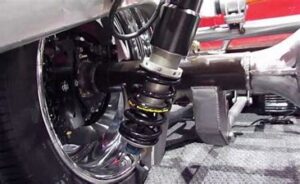Have you ever noticed that your car doesn’t handle as well as it once did? When you’re going straight, it can veer to one side or seem unsteady. The caster angle of your car’s front wheels may be the cause of these problems. But don’t worry, changing the caster can improve your driving experience significantly and is simpler than you might believe.
We’ll go over the fundamentals of caster adjustment, explain why it’s important, and how to adjust caster by giving you step-by-step directions to help you get your car’s caster angle just right in this article. You’ll find this material useful whether you’re an experienced or novice vehicle enthusiast.
Table of Contents
Explain What Is A Caster In A Car?
Caster is like the secret ingredient in an automobile that improves stability and steering. When viewed from the side, your front wheels’ angle is everything. Put a line through the top and bottom halves of the front suspension of your car. A caster is the angle formed by that line and a straight line running through the tire up and down.
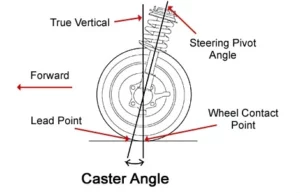
So why is caster crucial? Well, it performs a few crucial tasks. In the first place, it maintains your steering steady, preventing you from fumbling with the wheel. Second, it makes your automobile drive straight on choppy roads without swerving. Thirdly, it has an impact on how well your car turns. Therefore, it might be necessary to inspect and adjust the caster angle if your car isn’t travelling straight or feels unsteady when you steer.
What Is The Importance Of Caster In A Car?
Your car’s handling and stability are greatly influenced by the caster. It’s important to do it correctly for the following reasons:
1. Directional Stability:
The steering stability of your car is impacted by the caster angle. When the caster is set appropriately, it balances the effort needed to steer with the return to a straight-ahead position after you let go of the wheel.

2. Strictly Linear Stability:
Even on rough roads, your car will track straight without wandering or drifting provided the caster settings are correct.
3. Cornering Performance:
Caster affects how well your car turns. Your car’s responsiveness and stability may be impacted when making turns.

4. Tire Wear:
Inadequate caster settings might cause uneven tire wear, which will ultimately cost you more.
Therefore, let’s go on to how you can modify it yourself now that you know why caster is necessary. Read further to gain more insights.
How To Adjust Caster In A Car: A Step-by-Step Guide
Make sure you are prepared with the following equipment and materials before you start changing the caster on your car:
- For safely raising and supporting your car, you’ll need a jack and jack stands.
- To remove and modify various components, you’ll need sockets and wrenches.
- To precisely measure the caster angle, use a tape measure.
- For fine adjustments, this Caster/camber gauge is required.
- Wheel alignment turn plates are an optional accessory that makes it simpler to rotate your car’s wheels while they are being adjusted.
- A flat surface is necessary for precise measurements.
Now that you have everything you need, let’s get started on the caster adjustment procedures.
Step 1: Prepare Your Car
Start by putting the parking brake on and placing your automobile on a level surface. Put a wheel alignment turn plate below the front wheels of your car if you have access to one.
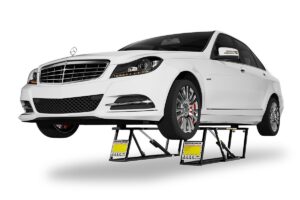
Step 2: Raise Your Car’s Front End
Lift the front of your automobile off the ground with a jack, making sure to keep it stable with jack stands.
Step 3: Access The Suspension Components
Track down the suspension parts that let you change the caster angle. Depending on the make and model of your car, some elements could change. The mounts for the upper control arms or struts are frequent adjustment sites.
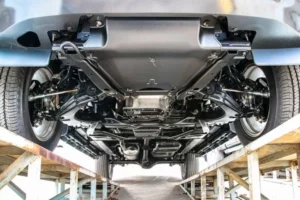
Step 4: Calculate The Current Caster Angle
To determine the present caster angle, use a caster/camber gauge and adhere to the directions provided by the maker. This measurement should be noted for future use.
Step 5: Make Modifications
You’ll either need to loosen and adjust the upper control arm or strut mount nuts or utilize specialist adjustment cams, depending on the suspension design of your automobile. For further instructions on how to make these changes, refer to your car’s service manual.
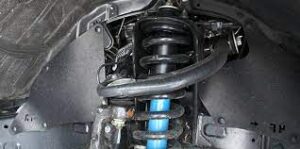
Step 6: Determine The Suitable Caster Angle
To ascertain the ideal caster angle, consult the manufacturer’s specs or the advice in your service manual. The intended use and suspension configuration of your car can affect this angle. Using your caster/camber gauge to guarantee accuracy, adjust the caster angle as needed.
Step 7: Measure Again And Adjust
Reassess the caster angle to make sure it matches your intended setting once the adjustments have been made. Adjust as necessary to reach the ideal caster angle.

Step 8: Firmly Tighten Bolts
Once the correct caster angle has been reached, tighten all suspension bolts and nuts firmly to eliminate any movement.
Step 9: Bring Your Car Down
Utilizing the jack, gently remove your car from the jack stands.

Step 10: Test Drive And Final Inspection
Take your car for a test drive to ensure it handles appropriately. Check to see if it tracks straight on level roads and how it steers. You’ve successfully altered the caster angle on your car if everything seems comfortable.
Therefore, these are some simple steps if you’re wondering how to adjust caster of a car. Moreover, refer to the above-mentioned steps to easily adjust the caster of your car.
Conclusion:
Now, that you’re aware of how to adjust caster in a car? Remember, adjusting the caster angle on your automobile may seem difficult, but it’s completely doable with the correct equipment, a little patience, and focus on the details. Your car’s handling, steering stability, and general performance can all be greatly enhanced by using proper caster adjustment. Therefore, give caster adjustment a try if you’ve been having handling troubles or just want to fine-tune your car’s alignment. It will all be beneficial because of your more secure, comfortable ride.


